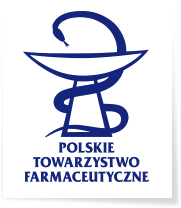Edward Franciszek Pliński, Stanisława Plińska
Ekspozycja obiektów molekularnych na fale z pasma terahercowego – zagrożenia
2025-02-05
Przedmiot badań. Praca ma charakter przeglądowy i ma dać odpowiedź na pojawiające się pytania naukowców i producentów zawansowanej aparatury naukowej, które dotyczą możliwych niebezpieczeństw związanych z oddziaływaniem fal terahercowych (THz) na organizmy żywe i możliwy destrukcyjny wpływ fal THz na procesy technologiczne w przemyśle medycznym i farmaceutycznym. Odpowiedzi na te pytania mogą wskazać na warunki poprawiające komfort pracy z takimi falami oraz znaleźć zastosowanie tych fal w szeroko pojętej biomedycynie oraz farmacji.
Materiał i metody. Przedmiot badań oraz metody badawcze zostały omówione na tle ogólnie pojętego świata bio-organizmów i bio-molekuł. Dobrano stosowne dane literaturowe dotyczące omawianej tematyki. Zagrożenia odpowiednio pogrupowano na te mieszczące się w tematyce biomedycyny, jak i w naukach farmaceutycznych.
Cel badań. Celem opracowania jest zidentyfikowanie i zbadanie możliwych zagrożeń, które może nieść praca z urządzeniami THz, oraz wskazać na wpływ fal THz na organizmy żywe i inne biomolekuły, gdzie uwzględniono zarówno czynniki termiczne, jak i rezonansowe. Uwzględniono możliwe niedogodności i zagrożenia mogące się pojawić przy stosowaniu techniki terahercowej w naukach farmaceutycznych. Opracowanie ma wskazać nie tylko zagrożenia niesione przez rozwijającą się technikę terahercową, ale równie wskazać i zasugerować sposoby posługiwania się promieniowaniem z pasma terahercowego.
Wyniki. Omówiono technikę nsPEF; poddano analizie czynniki środowiskowe, jak wpływ fal THz na organizmy ludzkie (w tym motywy konstrukcji tzw. broni niezabijającej), wpływ na organizmy zwierzęce i roślinne; omówiono wpływ fal THz na obiekty molekularne, takie jak woda, aminokwasy, nukleobazy, cukry, białka, DNA i RNA. Uwzględniono możliwe zagrożenia falami THz dla technologii komponentów farmaceutycznych.
Wnioski. Przy obecnym stanie wiedzy uznaje się, że rozwój techniki terahercowej ma olbrzymi potencjał wpływania na wiele dziedzin życia społecznego, naukowego oraz przemysłowego i nie stanowi zagrożenia dla wszelkich badań i komercjalizacji.
Słowa kluczowe: fale terahercowe, technika THz, zagrożenia ekspozycją, biomolekuły, organizmy ludzkie, organizmy zwierzęce, organizmy roślinne, potencjał transbłonowy, obiekty molekularne, preparaty farmaceutyczne.
© Farm Pol, 2024, 80(9): 597–606
Exposure of molecular objects to terahertz band waves – risks
Subject of the study. The paper is a review aimed at answering the emerging questions of scientists and advanced scientific equipment manufacturers regarding the potential dangers associated with the impact of terahertz (THz) waves on living organisms and the possible destructive effects of THz waves on technological processes in the medical and pharmaceutical industries. Answers to these questions may indicate conditions to improve the comfort of working with such waves and find their application in broadly understood biomedicine and pharmacy.
Material and methods. The subject of the study and the research methods were discussed in the context of the broadly understood world of bio-organisms and bio-molecules. Relevant literature data on the discussed topic were selected. The hazards were appropriately grouped into those fitting within the scope of biomedicine and pharmaceutical
sciences.
Objective of the study. The objective of this paper is to identify and examine the possible hazards that working with THz devices may pose, as well as the effects of THz waves on living organisms and other biomolecules, considering both thermal and resonance factors. Possible inconveniences and dangers that may arise from the use of terahertz technology in pharmaceutical sciences were considered. The study aims not only to highlight the threats posed by the developing terahertz technology but also to suggest ways of utilizing terahertz radiation.
Results. The manuscript discusses the nsPEF technique and analyses ; environmental factors, such as the impact of THz waves on human organisms (including the motives behind the construction of so-called non-lethal weapons), and their effects on animal and plant organisms. What is more, it discusses the impact of THz waves on molecular objects, such as water, amino acids, nucleobases, sugars, proteins, DNA, and RNA and considers possible hazards of THz waves for pharmaceutical component technology.
Conclusions. Given the current state of knowledge, the development of terahertz technology is considered to have enormous potential to impact many areas of social and scientific life.
Keywords: terahertz waves, THz technology, exposure risks, biomolecules, human organisms, animal organisms, plant organisms, transmembrane potential, molecular objects, pharmaceutical preparations.
© Farm Pol, 2024, 80(9): 597–606
Ekspozycja obiektów molekularnych na fale z pasma terahercowego – zagrożenia

